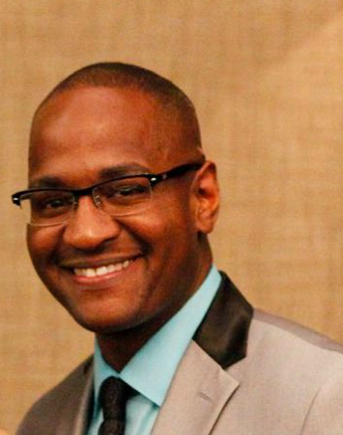
Dr. Kenneth Bryant, assistant professor of political science at UT Tyler, met with me over Zoom last week. Having the ear of a scholar, I found myself bringing him questions related to racism in Tyler, much like meeting a medical doctor becomes an invitation to troubleshoot personal medical woes. Our conversation covered a multitude of issues, including the origins of the United States police force, the role of religion in movements, what it takes to be antiracist and how smart phones are changing our justice system. Bryant also indulged my own queries about remnants of white supremacy in Tyler and sent The Loop a list of his favorite resources for our readers who want to learn more.
Our conversation has been edited for length and clarity. Photos courtesy of Kenneth Bryant.
I found the most interesting quote on your UT Tyler page. It’s a great way for us to begin talking. “The primary motivation behind Dr. Bryant’s research and teaching interests are re-examining well-worn conventional thought about historically marginalized communities.“
Yes. I figured perhaps the thing that I can do as a scholar in political science is be a part of introducing a discussion about how the black community in particular is not a monolith. My research looks specifically at how the public responds to what we’re seeing right now, which is responses to protests as the results of police brutality and police violence on unarmed Black men and women, but generally we can say on unarmed people, on American citizens.
What we’re seeing now is, in my experience, quite harrowing to watch. It has both given me some motivation to dig deeper in with the questions that I want to ask. But also, it has been very overwhelming and exhausting and distressing. I am personally battling this bizarre balance as a scholar and as a Black man in America. It’s not easy.
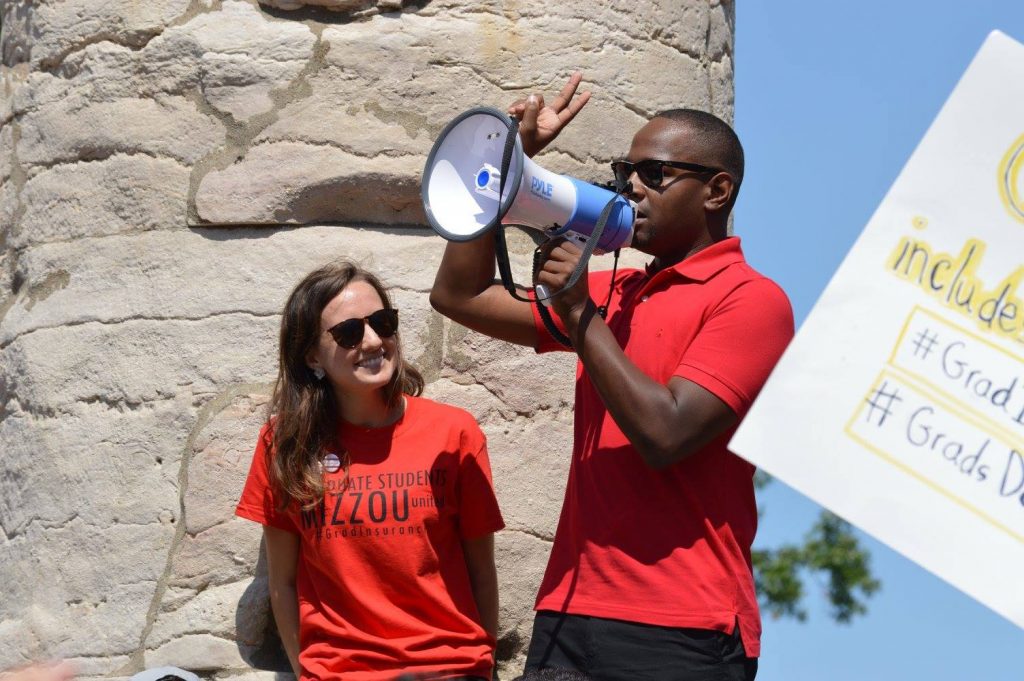
You used some really intense words, like “harrowing.” Knowing how well you know America’s history, what about this feels new, surprising, shocking in a new way that we haven’t seen or heard before?
The last part of what you said is actually, I think, the most important. We’re seeing, and we’re hearing it now, but nothing is new under the sun. This brutality that we are seeing has existed since the beginning of the institution of policing. And I would hope that your audience understands that the institution of policing — the genesis was as slave patrols. And so this idea that policing has always been an institution that is designed to protect and to serve all the citizens of the country is false.
What’s different now is that we’re actually seeing it on our phones. We are having to confront the images. I was speaking with a colleague, and I’m saying, ‘Can you imagine if we didn’t have footage of George Floyd being murdered, the amount of bad faith arguments about, “Well, the witnesses didn’t know what they actually saw,” right?’
Can’t do that now. We see the footage. What’s really new and what’s really different is that everyone is having to confront this. People are having to confront that they don’t have the ability to use the cognitive dissonance to rationalize and justify these police officers. Everyone is having to see what the Black community has seen since the beginning. America cannot hide behind some of the flowery language that we use about freedom and democracy. We are not in a position to act as a moral authority because the way we are treating our citizens in these streets — peaceful protests — is, I would argue, a human rights crisis.
This morning, I read a quote in a briefing that said the most cutting edge journalists of our day are black men and women with their phones.
Yes, yes. We saw in New York, the gentleman in the park with a woman on her phone performing. She is performing white woman-ness on the phone with the dispatcher. This exists all the way back to Emmett Till. A young boy murdered because of a woman, a white woman, performing her white woman-ness. Murdered. And we got to see it now on film, the sheer performance of it. People were shocked, except for the Black men and women in this country.
When you talked about policing from the beginning being a system of inequality, there is a movement right now for police defunding, and then other people are decrying, ‘That’s never going to happen or that’s not productive.’ What would you say?
I’m very ambivalent right now. I think there is a very good case to be made that the militarization has to be rolled back. That is a problem. Even in small communities, why do police officers possess tanks? This is a problem that I absolutely think should merit a consideration and conversation at the national level and at the local level.
As for abolishing the police altogether, that’s a more complicated conversation. I think the political instinct is that we are still a nation that is very much stuck in the status quo. And that status quo is, ‘We need the police. They are our protectors.’ And when you’re fighting against that, you’ve got large swaths of the country, including people of color, who still believe that the police are necessary. When you start talking about abolishing them all together, that’s a more complicated conversation that needs to be had, but certainly rolling back funding for these militarized departments is a good first step.
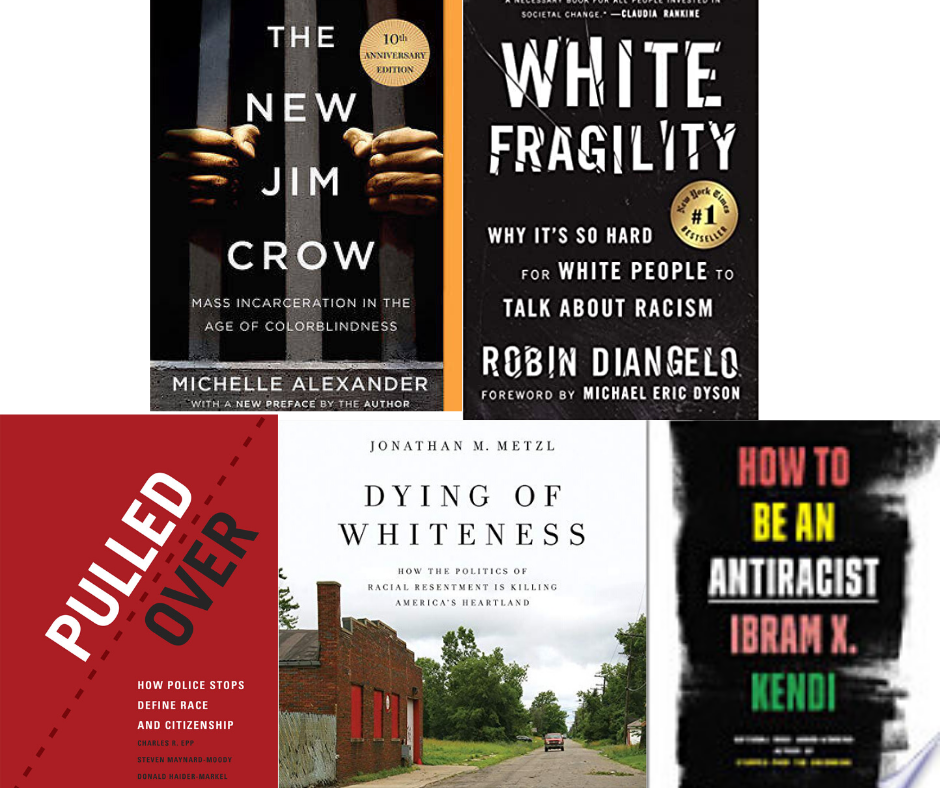
Let’s take a turn here. Tell me about your history in Tyler as a professor. What brought you here?
What brought me here is they hired me. This is actually my first job out of graduate school. I was blessed enough to receive the confidence of my colleagues with the political science department at UT Tyler. I just finished my third year. It has been a really good experience. My students are awesome, and we have these conversations. We talk about race. We talk about sex. We talk about class. We talk about different types of identities and their role in politics in America.
The students are very much in tune with what’s going on in the world. They have well developed positions on these matters. I have activists who have been in my class, and I have students who haven’t thought one bit about these issues.
One thing I do stress in my classes is I want to teach ambivalence. That’s what I have always argued. I want students to walk into the class very confident about what they think they know about something and leave class going, ‘Huh? I didn’t think about that.’ Students have shared that they are getting that experience in my classes.
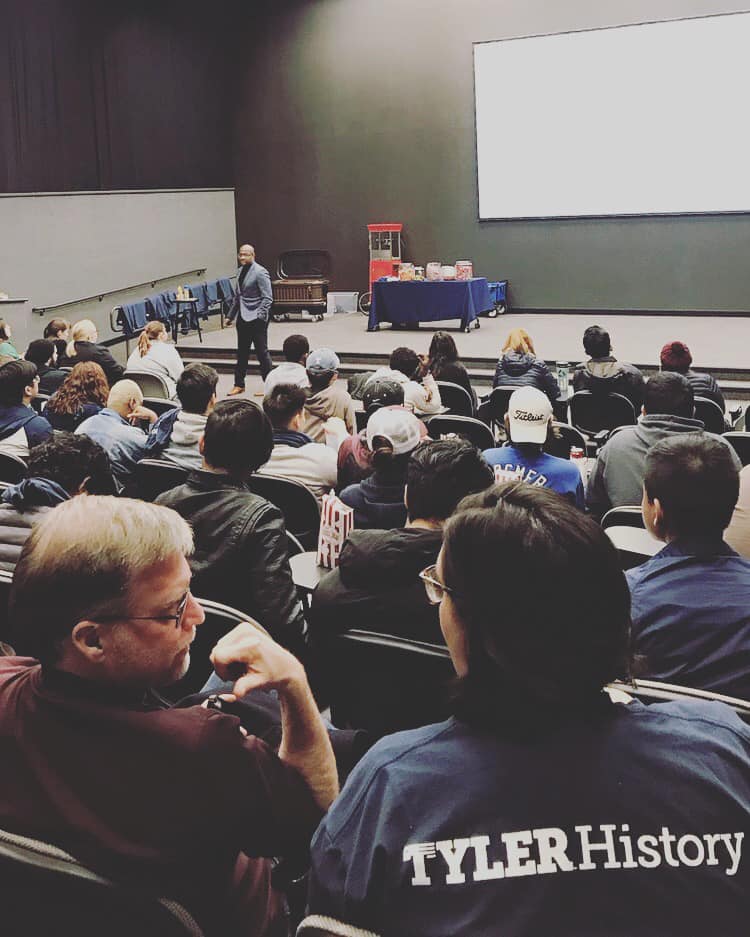
Students engage with each other in the debate, and they’re not attacking each other. They’re attacking the arguments, and they’re knocking these really weak or dangerous arguments flat in the classroom. That’s wonderful.
You have been in East Texas for three years. Are you from the Midwest, Dr. Bryant?
I’m from Ohio. Lorain, Ohio. Yup, right on Lake Erie.
Tell me what you’ve noticed about this region.
A lot of wearing of religion and faith on sleeves. Literally. I don’t know how I feel about that. It’s different from what I grew up in culturally. The state of Ohio, it’s a purple-ish state. The culture of the community itself is not overly partisan. Here very much so; you get the grand sense that this was a conservative area in every sense of the word. Right up to just a few years ago, it was a dry county. You couldn’t even buy booze, so that is a message.
To your point about wearing religion on our sleeves: the past couple of demonstrations downtown were either moved to a church or include the word prayer. Prayer on the Square happened last night. So, there is that filter of religion through which we are experiencing protests. Talk to me a little bit about that intersection, particularly in East Texas and how it affects the way your students interpret the content you give them in the classroom.
There’s a role that faith has in a movement such as that we’re witnessing. Faith had a role in civil rights. Without the Black churches, the civil rights movement would not exist the way that it did and probably wouldn’t have been as effective because it was an organized entity. I certainly don’t have a problem with filtering this movement through faith. If that’s what’s going to motivate folks to get out and to speak out, by all means. Where I have some discomfort is when it’s not inclusive. One thing that I noticed is often you hear, ‘We’re going to give an ecumenical prayer,’ and then the prayers are to Jesus.
Faith is going to reach a lot of folks, but everyone doesn’t have the same faith. Everyone doesn’t pray to Jesus, everyone is not Christian. The last thing we want to do is to make someone feel excluded because the prayer is a Christian prayer, and they don’t feel welcome. That’s not what we need right now. We need everyone here. This is very much aligned with when we talk about and think about race in this country. Very often, you have a white majority. They don’t think about, ‘Who are we excluding?’
Some devout Christians in our community, in conversations around George Floyd’s death, are saying racism is primarily a spiritual issue. My inclination is to believe there’s some bypassing happening — that if this is spiritual, it’s maybe not about here and now.
It’s a form of whitewashing that takes the uncomfortable issue and brings it over into an area where, I guess, maybe people feel a little more comfortable. Faith is important, but policy exists. And that’s what needs to change in this country for us to not continue to beat the cycle of trauma, pain and violence.
I spoke to a local leader yesterday. He said, ‘Hey, I don’t mean to be cynical, but who among the protesters will be here in six months?’ What is your feeling there? With some of the energy that’s building, what could that look like if it became long term?
First of all, not waiting for someone to be killed to engage in this issue. I agree with him. There’s something about this particular moment. A lot of folks are out of work, already distressed, and then you add this on top of it, and it’s a powder keg. I think that’s why we see so many folks out in the streets because of this moment.
But people get fatigued, worn down and bored, especially if they’re not personally being impacted by these brutal policies. And so how do we sustain this? Luckily, we’re in an election year. One way to keep this momentum is to tie this movement in with the broader conversation about politics in this country.
Part of it [is] knowing that there is no one victory. These officers [involved in George Floyd’s killing] have been charged. If they are convicted, that’s a step. That is not the victory because it’s not about those individual officers. It’s about the system itself. This is an ongoing fight.
There’s one thing I really wanted to impress upon the audience. Comfort is complicity. Discomfort is the point. You’re just not going to be comfortable talking about these issues with family and friends, especially if you’ve got skeptical family and friends. It’s not going to be easy and comfortable stepping out of your comfort zone to talk about these particular issues on your social media, to invite a pushback or invite a backlash.

And for the white folks, de-centering yourself. If you feel like you are the center of the conversation, move out the way. Step aside because that is not the appropriate way to go about this. It isn’t about your particular feelings. You may feel defensive. Good. Challenge that, confront that. Learn why that is. You may feel a little angry or resentful or guilty or whatever, but realize that all of these feelings, in this particular context, are beside the point. The reality is, these feelings that you’re feeling in the moment are the feelings the Black community collectively has felt since the beginning.
When you think about those more uncomfortable conversations, what are some good first steps to start?
If someone says something problematic, call them out. Question them, correct them. Don’t remain silent. Share information, even if they didn’t ask for it. It isn’t enough to be neutral. Neutrality doesn’t work when you’re trying to dismantle a racist and a problematic system. Remind yourself, ‘If I’m engaging in anything related to race in this country, any kind of conversation, any type of activity, and I feel comfortable, I’m doing it wrong. And the people around me should be feeling uncomfortable,’ especially if you’re in a group of white individuals.
You talked about small victories. If we think about all of these micro- shifts culminating a big victory or reckoning, what would that actually look like in our country?
I am reticent to even identify a victory as the victory. When is this going to be over? Probably not in our lifetime. That’s the reality. You have to constantly push and push and be engaged. There will be small victories and small indicators when we’re not seeing disproportionate police stops and disproportionate police murders of black and brown men and women.
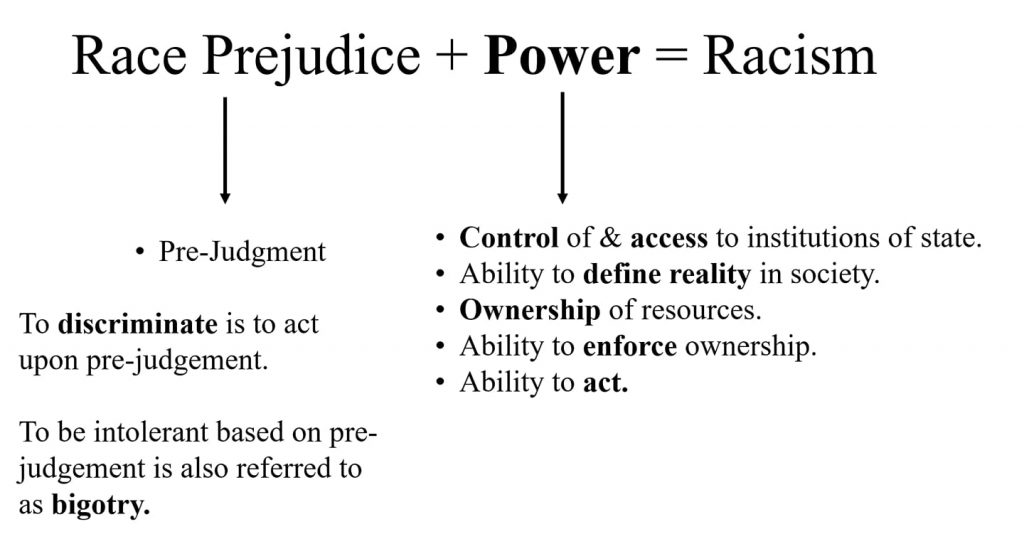
Is there any vision you keep in sight, beyond little victories? I’m asking you to help us imagine what would a world look like that were racially equal.
If I had the answer to that, I would be Nostradamus because I would literally have to be imagining a world that has never existed. I don’t want people to feel defeated, [feeling that] ‘Well, why are we fighting if we’re never going to see the other side?’ But the alternative is what we have now, and that’s unacceptable. I don’t know what that looks like, but I do know that we can work on the small victories.
If you will indulge me, I want to give you some local scenarios. I would like to hear through your scholar’s lens about those.
Sure.

The first year I moved to Tyler in 2008, I was just getting to know the city. I visited a place owned by the city, the Goodman-LeGrand Museum. There’s a large painting in the parlor, depicting a white woman with a slave, an older man. His hands are clasped, and she’s teaching him scriptures from a Bible. He’s beaming.
During the museum tour, the depiction was applauded as, ‘Not everybody was terrible to their slaves. This woman was so kindhearted. Look at what she did, and look how grateful he is.’ That is a narrative, an official narrative with ties to our city. What’s going on when we have people presenting information in that way?
A chief problem is that people are not seeing the humanity of that man. They’re not seeing the humanity, and they’re not seeing the brutality of bondage. [There’s a] southern tradition, at least southern white tradition, [when] we’re thinking about slavery. There’s a lot of defensiveness, a lot of dissonance between the revisionist history that was taught to them by their parents and grandparents and the reality of what happened.
People are trying to come up with some way to rationalize that their parents and grandparents and great-grandparents were not horrible human beings. ‘Oh, well, at least they were not whipping. He looks happy. They fed him. At least…’ Almost like you would talk about an animal. They own this person. They enslaved this person. Again, going back to the word discomfort, if I have to think about my ancestors as x, that makes me uncomfortable. And what does that say about me?
If there were a public correction at the Goodman Museum — for you, what would be most helpful?
It would be the statement made about the painting, absolutely. How a tour guide talks about that painting is important. There is no at least. He was in bondage, period. Slavery was a disgusting institution, period. And this woman was complicit in a part of that period. There’s no other rationalization. De-center that woman. She is not the story. The story is that that man is enslaved, and that’s a problem.
I think you have been at UT Tyler long enough to remember the school board meetings around the Robert E. Lee High School name change. Nationwide, removing confederate symbols is being opened up again for conversation, even locally. What is the relationship between the high school name, the monuments and the recent protests?
The institution of slavery was brutal. Anyone who would fight to maintain it was a villain in American history. For a section of a subsection of the population, Robert E. Lee was a terrorist. Can we give history some context? Can we not celebrate the villains of history? Absolutely. Teach about Robert E. Lee, teach about the Confederacy, give us the actual history of the Confederacy and the institution of slavery.

We don’t need to force our students of color to walk in doors of a school that’s named after someone who terrorized their ancestors and fought to maintain that system. What is the tradition here that we’re trying to maintain? That’s what I’d like to know. I don’t think you can make a case that we should maintain the tradition of segregation, brutality, slavery [and] domestic terrorism. That’s not a tradition I would want to be a part of.
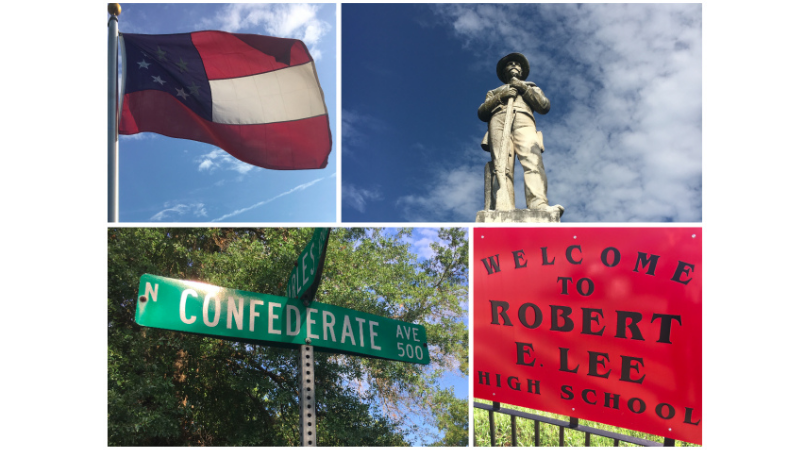
Dr. Bryant, did you know about the high school name before you moved to Tyler?
I did not. I wasn’t surprised, once I was here. I’m out walking, and there’s Plantation Drive and Confederate Avenue. Again, I’m not from the South, so a lot of this is new. Wrapping my head around it, it’s been a bit of a transition and adjustment.
If I imagine Tyler as a place that’s just barely having these conversations, sitting in silence, is an eruption necessary, developmentally, to come out the other end and have some real change?
I don’t want to equate eruption with violence, but I do want to say that people have to wake up. The way that we think about the institutions — city council, managers, ordinances, businesses, education — have to alter. All of these entities have to shift. One thing that gets us in trouble is we are so fixated on individuals. It’s all about individualism. And what happens is we cannot reorient a system if we’re only thinking about individual changes. It has to be system-wide leadership and policies.
It isn’t about replacing a president. [It’s] replacing the rules and the policies so that people are not subject to inequality that exists as a consequence of the policies that were written. Unfortunately it’s a hard sell because from the beginning, from K through 12, we are taught that this is an individualistic society. It’s about pulling yourself up by your own bootstraps, your own merit. All of that is a lie, and we have to acknowledge it.
Some people have the sense that the only way that they can do the work [of antiracism] is [by] throwing themselves upon the altar. I’ve seen some very strange clips on social media, people renouncing their white privilege and all this sort of strange symbolism. They are kneeling and asking for forgiveness. I mean, all of those things are performative. I wouldn’t have believed that if I didn’t see it. No, no, you don’t need to do things. I don’t know any Black person that would be asking for that. At the very least, pick up a book, do some reading, do some research and don’t place that burden upon the people of color [to educate you]. Take it upon yourself to do the work.
That’s an instance of an individual trying to take on a system. Also, if I come to you because you have offended me and then you start crying about what an awful person you are, I have to be your caretaker now. You’re not able to just handle what I’m saying.
That’s actually a part of it. I would encourage folks to read Robin DeAngelo’s book, “White Fragility.” That is a common tactic in response to very uncomfortable confrontations about racial biases. The white person is confronted, and all of a sudden it becomes about them. [When that happens], you are now centering yourself, and what have we learned? That’s wrong. Don’t do that. Do not center yourself. Lowest bar? De-enter yourself. Lift up Black voices, and listen to them. You’ll be amazed what you learn.
Love what you're seeing in our posts? Help power our local, nonprofit journalism platform — from in-depth reads, to freelance training, to COVID Stories videos, to intimate portraits of East Texans through storytelling.
Our readers have told us they want to better understand this place we all call home, from Tyler's north-south divide to our city's changing demographics. What systemic issues need attention? What are are greatest concerns and hopes? What matters most to Tylerites and East Texans?
Help us create more informed, more connected, more engaged Tyler. Help us continue providing no paywall, free access posts. Become a member today. Your $15/month contribution drives our work.







